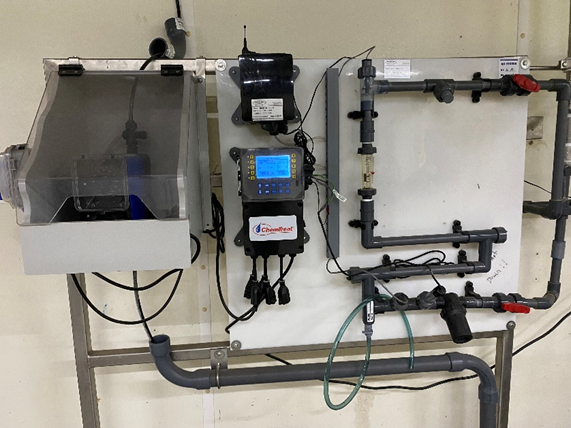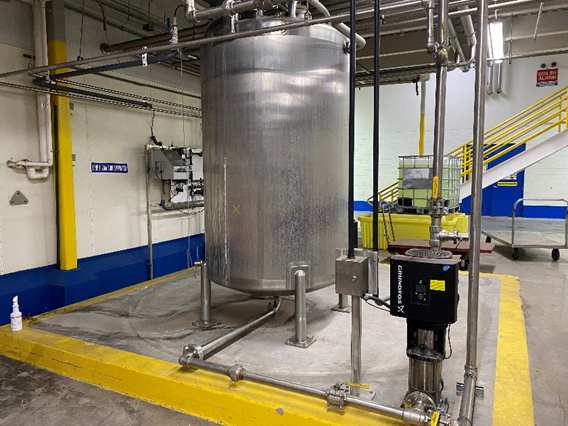-
USA - English
- Locations
- SDS Access
- CTVista®+ Login
A large beverage manufacturing facility in the Southwestern US uses significant amounts of water to produce hundreds of thousands of cases of product every year. Facility personnel were looking for a way to reuse water at the plant to achieve cost savings and meet environmental goals.
The aseptic production line at this plant uses an antimicrobial agent to sterilize bottles. The bottles are then rinsed with sterile reverse osmosis (RO) water heated up to pasteurizing temperatures and cooled down. This water was being sent to drain at the rinser, resulting in high water costs. The ChemTreat team was asked to come up with a way to reuse this water in other processes instead.
The sterile water leaving the rinser has a low conductivity (<500 µS/cm), which made it a good candidate for reuse, but it is also low in pH. To counteract low-pH corrosivity, ChemTreat implemented our UC3002 treatment product, a synergistic blend of alkalinity boosters and scale inhibitor to reach a setpoint pH of 6.5–8.2.

Process flow of reclaim water
To maintain a constant pH, the site installed a control panel consisting of an Advantage Controls MegaTron controller, flow switch, pH probe, cellular data modem, corrosion coupon rack, and chemical dosing pump.
Control panel with associated equipment


Overview of system, including control panel, mixing tank, and chemical tote
After treating the sterile RO water with UC3002, the water quality was suitable for use in various applications, including cooling towers and bottle coolers. The water is sent to different systems as determined by the controller.
Implementing this reuse program saves an average of 35 gpm of water when the rinser is running. An estimated 20–30% of RO water from the rinser has been reused in the first year of implementation, saving between 1.17 and 1.76 million gallons of water.
The plant plans to connect this reclaim system to other water systems in the future to enhance water savings and reduce costs at the facility.
Results are examples only. They are not guaranteed. Actual results may vary.
